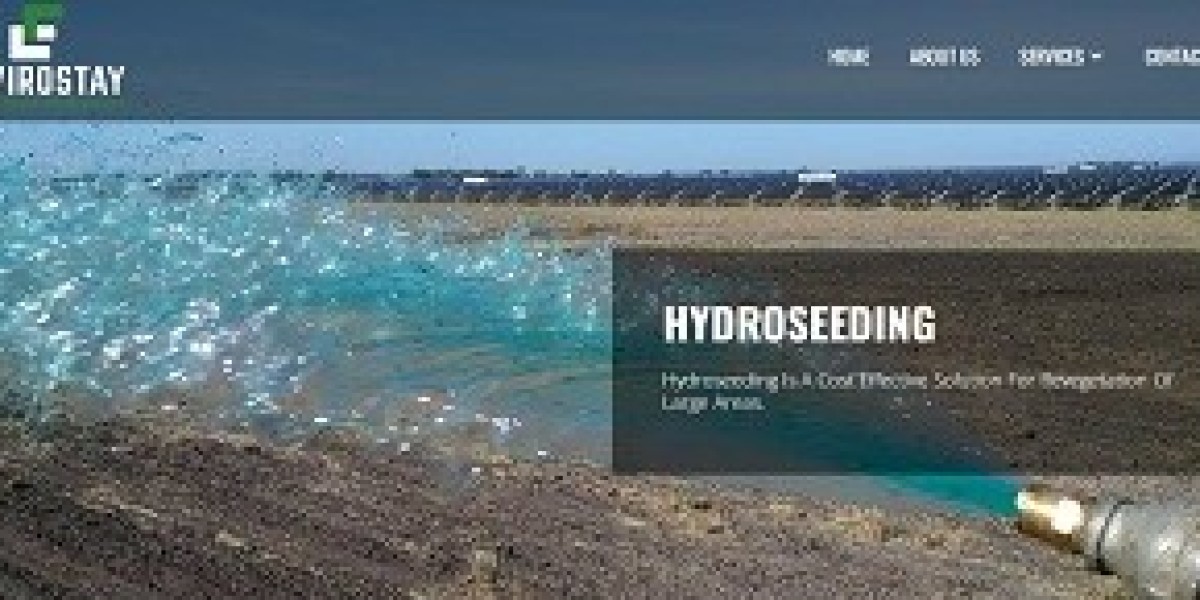Hydroseeding, a widely recognized and efficient method of seeding, has gained significant traction in Australia. This innovative technique is known for its cost-effectiveness, rapid application, and high success rates, making it a preferred choice for various landscaping and erosion control projects.
What is Hydroseeding?
Hydroseeding, also referred to as hydraulic mulch seeding or hydro-mulch seeding, is a planting process that uses a slurry of seeds, mulch, and water. This mixture is sprayed onto the soil using specialized equipment, allowing for even distribution and better seed-to-soil contact.
Australia's diverse climate and soil conditions make it an ideal candidate for hydroseeding. Whether for residential lawns, commercial landscapes, or large-scale agricultural projects, hydroseeding offers a practical solution to establish vegetation quickly and effectively.
In regions prone to erosion, hydroseeding proves to be especially beneficial. The mulch in the slurry helps protect seeds from erosion and extreme weather conditions, ensuring better germination and growth rates.
The Process of Hydro Spray Grass
The term "hydro spray grass" is often used interchangeably with hydroseeding. This process involves spraying a slurry mixture containing grass seeds, mulch, fertilizer, and water onto the soil. The application is swift, allowing large areas to be seeded in a relatively short amount of time.
Hydro spray grass is ideal for areas where traditional seeding methods are challenging or impractical. The slurry adheres to the soil, reducing erosion and providing an optimal environment for seed germination. This method is commonly used in Australia for lawns, sports fields, and roadside vegetation.
Hydromulch seeding is a specific type of hydroseeding that focuses on using a mulch-heavy mixture. The mulch, often made from wood fibers or paper, helps retain moisture, protect seeds, and enhance soil structure. This method is particularly useful in arid regions of Australia where water retention is crucial for seed germination.
The mulch layer also helps to suppress weeds and provides a protective barrier against the harsh Australian sun. Hydromulch seeding is frequently employed in mine reclamation, roadside revegetation, and other large-scale environmental restoration projects.
Benefits of Hydroseeding
- Cost-Effective: Compared to traditional sodding, hydroseeding is more affordable, especially for large areas. The reduced labor and material costs make it an attractive option for budget-conscious projects.
- Quick Application: The hydroseeding process is fast, allowing for the seeding of extensive areas in a fraction of the time it would take with traditional methods.
- High Germination Rates: The mulch in the slurry retains moisture, protecting seeds and promoting faster and more uniform germination.
- Erosion Control: The mulch layer stabilizes the soil, preventing erosion and providing a protective cover for seeds.
- Versatility: Hydroseeding can be tailored to different soil types and climates, making it suitable for a wide range of applications in Australia.
Hydroseeding, hydro spray grass, and hydromulch seeding are revolutionizing the way vegetation is established in Australia. These methods offer efficient, cost-effective, and environmentally friendly solutions for various landscaping and erosion control projects. Whether you're looking to establish a lush lawn, revegetate a barren area, or control erosion on a slope, hydroseeding provides a reliable and effective approach. As the demand for sustainable and efficient seeding methods grows, hydroseeding is set to become even more integral to Australia's landscaping and environmental management practices.








